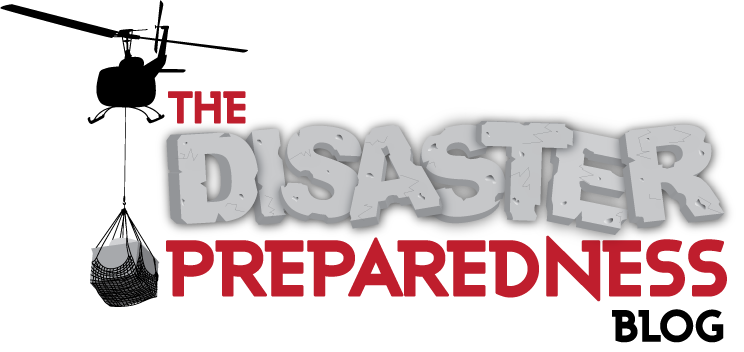How to Prepare Your Home for Natural Disasters
 Friday, July 11, 2025 at 5:24AM | |
Friday, July 11, 2025 at 5:24AM | |  Email Article
Email Article Natural disasters can strike without warning, turning everyday life upside down in an instant. Whether it’s the relentless surge of a flood, the howling winds of a hurricane, the sudden jolt of an earthquake, or the destructive force of a tornado, these events threaten our homes and safety. In 2024 alone, the U.S. has faced 15 disasters, each costing over $1 billion in damages, a stark reminder of nature’s power. But here’s the good news: you can take control. By preparing your home now, you can minimize damage, protect your loved ones, and gain peace of mind. In this guide, I'll walk you through practical, actionable steps to fortify your home against floods, hurricanes, earthquakes, and tornadoes, along with universal tips to keep you ready for anything.
Preparing for Floods
Floods are the most common natural disaster in the U.S., striking both coastal and inland areas with devastating effect. Here’s how to safeguard your home:
Assess your flood risk: Start by checking FEMA flood maps or consulting local authorities to see if your home lies in a flood-prone zone. Even if you’re not in a high-risk area, heavy rain can cause unexpected flooding.
Elevate utilities: Move electrical panels, HVAC systems, and appliances like washers and dryers above potential flood levels—ideally to an upper floor or on raised platforms.
Install flood vents: These openings in your foundation allow water to flow through, reducing pressure that could collapse walls or floors.
Use waterproof materials: In basements or lower levels, swap carpet or wood for ceramic tiles, vinyl, or sealed concrete, which resist water damage and mold.
Don’t overlook insurance. Standard homeowners’ policies do not cover floods.
The EPA recommends elevating utilities and installing vents to cut flood-related losses, a step that could save you thousands.
Preparing for Hurricanes
Hurricanes combine torrential rain with ferocious winds, testing every part of your home. Here’s how to stand strong:
Secure windows and doors: Install storm shutters or impact-resistant glass to shield against flying debris. Reinforce garage doors with braces or kits—they’re a common weak point in high winds.
Strengthen your roof: Check for loose shingles and secure the roof to your home’s frame with hurricane straps or clips. A solid roof can mean the difference between minor repairs and total loss.
Trim trees: Cut back dead branches and overhanging limbs near your house to prevent them from crashing through windows or walls.
Anchor outdoor items: Tie down or store patio furniture, grills, and garden tools—anything that could turn into a projectile. Better yet, move the items indoors when you can.
A NOAA weather radio is a must for real-time updates during a storm. The CDC emphasizes securing windows, doors, and roofs as key steps to hurricane-proof your home.
Preparing for Earthquakes
Earthquakes hit fast and hard, leaving no time to react. Preparation is your best defense—here’s what to do:
Secure heavy items: Bolt bookcases, cabinets, and water heaters to walls or studs. Falling furniture is a top injury risk during quakes.
Reinforce your foundation: If your home’s older, hire a pro to check its seismic strength. Retrofitting with anchor bolts or braced cripple walls can prevent collapse in high-risk zones.
Stock an emergency kit: Keep at least 72 hours’ worth of water, non-perishable food, and first aid supplies handy. Services like power and water may be down for days.
Learn utility shutoffs: Know how to turn off gas, water, and electricity to avoid fires or leaks post-quake.
Practice “Drop, Cover, and Hold On” with your family—it’s the gold standard for earthquake safety. FEMA’s guidelines on securing furniture and retrofitting homes are backed by decades of research.
Preparing for Tornadoes
Tornadoes strike with little notice, their intense winds capable of leveling homes in seconds. Here’s how to prepare:
Designate a safe spot: Pick a basement or an interior room on the lowest floor—no windows. This is your shelter when sirens blare.
Build a safe room: In tornado-prone areas, consider a reinforced room meeting FEMA standards. It’s an investment in survival.
Know the signs: Watch for rotating, funnel-shaped clouds or a loud roar like a freight train. A tornado watch means conditions are ripe; a warning means one’s been spotted—act fast.
Stay informed: A battery-powered weather radio keeps you in the loop when power fails.
Add helmets to your emergency kit for head protection against debris. Ready.gov stresses safe rooms and awareness as tornado lifesavers.
General Preparedness Tips
Some strategies apply no matter the disaster—here’s your all-purpose checklist:
Assemble an emergency kit: Pack at least three days’ worth of essentials: one gallon of water per person per day, non-perishable food, medications, flashlights, batteries, and copies of vital documents (IDs, insurance policies).
Make a family plan: Set up an out-of-area contact and two meeting points—one near home, one farther away. Ensure everyone knows the drill.
Stay in the know: Sign up for local alerts and keep that weather radio charged.
Don’t forget pets: Include pet food, water, and a carrier in your kit—your furry friends need safety too.
Review your plan yearly, life changes, and so should your prep. A family in Florida who reinforced their home before Hurricane Ian in 2022 faced minimal damage while neighbors rebuilt from scratch. Proof that preparation pays off.
Take Action Now
Fortifying your home isn’t just about saving drywall, it’s about protecting your family and your future. Natural disasters don’t wait for invitations, and with more people living is areas prone to disasters, the stakes are higher than ever. Start small: check your flood risk, bolt down a bookcase, or pack an emergency kit. Then tackle bigger projects like reinforcing your roof or building a safe room. Every step counts.
The cost of inaction is steep. Billions in damages and countless lives disrupted each year. But the power to fight back is in your hands. Assess your risks, make upgrades, and build a plan today. When the next disaster looms, you’ll be ready. Not just to survive, but to thrive.








Reader Comments